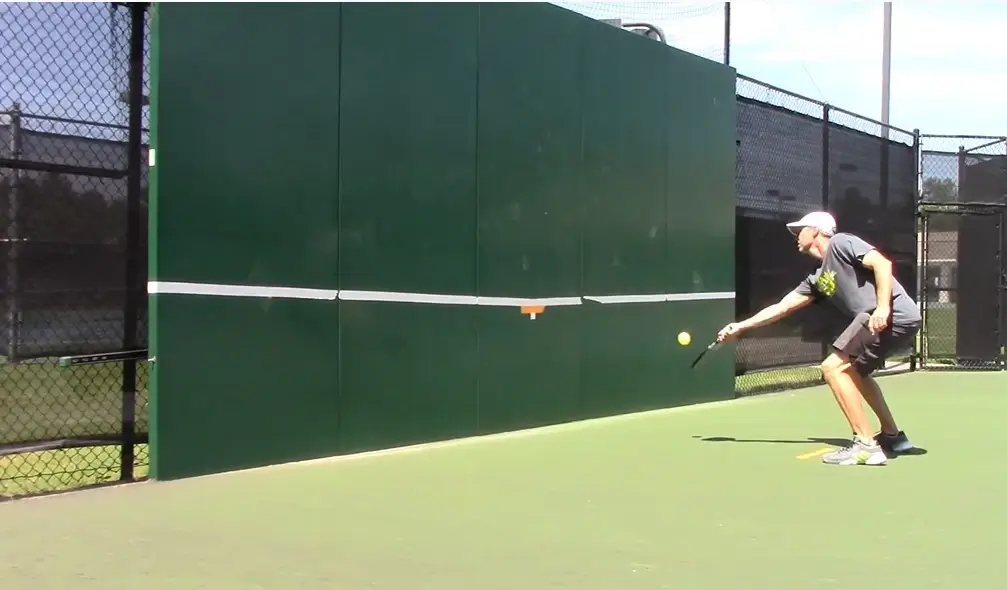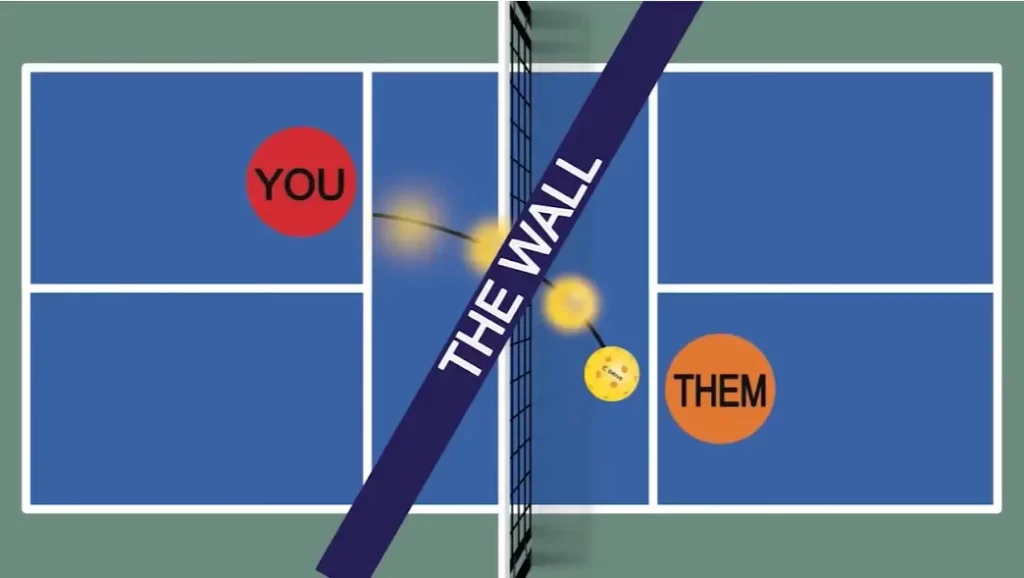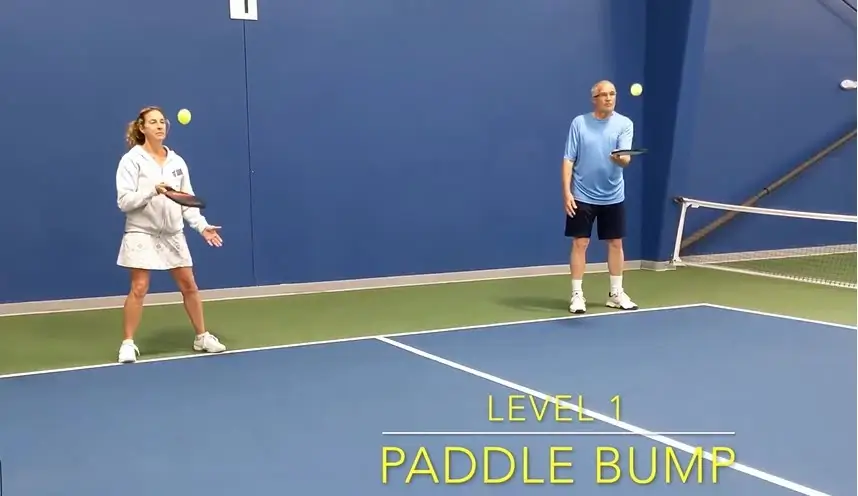We all are well-aware of a famous proverb i.e., “practice makes a man perfect.” In this article, our key focus is how to practice pickleball alone.
There are so many indoor and outdoor games/sports that are played with an opponent and need a person too for practice.
These are badminton, cricket, tennis, table tennis, pickleball, etc. Despite the facts, we remained unable to produce such machines at cheap rates, which is affordable for an individual to practice alone, and a pickleball game has also been considered one of such games.
Here, we are going to discuss how an individual can practice enhancing his skills and stamina alone.
No doubt, Pickleball is considered one of the games, played between two or more players. But sometimes, we don’t have a second player regularly, and we don’t want to lose our skill and stamina owing to the non-availability of an opponent.
Drills for Practice Pickleball Alone
Following are some sessions, which help you in practicing alone and improving your stamina in pickleball play.
Details are as under:
Service of Ball
Collect more balls and stand at either sideline for service (assuming your opponent is standing on another side).
Firstly, you will hit a forehand shot and carry the paddle from lower to cross your head.
Secondly, you will hit a backhand shot and carry the paddle reverse (of hitting a forehand shot).
Pickleball Wall Drills

In this session, we distance ourselves 07 feet away from the wall. Then sketch a 20 feet line on the floor parallel to the wall.
On-wall, we will draw a line at the height of 36 inches, and above the said line, we mark 2 targets with the help of prominent tape or paint.
We will stand at the line, sketch on the floor and then start playing shots like forehand, backhand, dink, third shot drop, and hit the target including foot movement.

This drill is further divided into the following two helpful levels:
Level 1:
We will hit the ball on the pickleball wall, and when the ball will return to us, we will hit it after a bounce between the wall and the non-volley zone. This practice will improve the skill of controlling the ball after a bounce in the kitchen and hitting it back at the specific target.
Level 2:
At level 2, we will hit the ball on the pickleball practice wall at a pace that the ball will directly return to us without a bounce into the non-volley zone. By hitting the ball without bounce, we will maintain a rally between the wall and us to build accuracy in hitting volley shot.
You will hit backhand and forehand shots on both levels.
Paddle Bump
Level 1:
Stand straight and hold the paddle with the forehand grip. Later, hit the ball with a paddle right before your head. The ball should bounce from belly to head.

Level 2:
Posture and paddle grip will remain the same but you will hit a shot with a forehand and another hit with a backhand. Keep doing this practice with forehand and backhand shots.
Level 3:
In this level, you will bump the ball twice forehand shot, and twice with the paddle’s edge. This practice will enhance your accuracy.
Selfie Bounce
Level 1:
You will grip the paddle with forehand grip as you did in the paddle bump. You will hit the ball after a bounce on the floor. You can move your feed if you want to move.
Level 2:
The things will remain the same as level 1 but at this level, you have to lock your feet movement.
Level 3:
In this level, hit backhand and forehand shot, besides, moving your feet.
Dink shuffle
In this drill, you will hit dink shot and continue your movement in either left or right service court. You can use forehand and backhand grip.
After mastering the drill, you may put a chair in the service court and hit the dink shot above the chair. After a bounce, you can hit the ball backside the chair and reversely.
If you still confuse about paddle bump, selfie bounce, and dink shuffle then this video will help you.
Feet, legs, arms, and body movement
Feet, legs, arms, and body movement play a key role in pickleball as paddle grip and shots do.
It is necessary to learn about all the above-said movements according to shots played by a player. Keep in mind that the movements should match your shots.
Following are some helpful tips:
- Feet and legs movement includes back to front, front to back, right to left, left to right, triangular move, bending of knees, usage of heels (up and down), etc. You may practice while holding a paddle in your hand and moving your feet and legs according to the above-discussed ways.
- Arms movement covers shoulder, elbow, wrist, and hand. We should exercise for these muscles as they are used in different shots like dink, drive, service, volley, drop shot, etc. It is suggested to move your arms, shoulders, elbows, wrists, and hands as different shots are needed.
- Lastly, the body moves and bends while playing different shots. We should adopt exercises like dumbbell rows, single and double legs deadlifts; locking your body from your hips to feet, and moving the upper portion (of your body) from left to right and right to left; bending it to front.
Final Thoughts On How To Practice Pickleball Alone
In the light of above-said discussion, it can be said that to practice pickleball alone, drills/skills like wall drill, service of the ball, paddle bump, selfie bounce, and dink shuffle are very helpful for an individual to enhance your level and stamina.
Each drill helps you to tackle the different shots and gives a severe blow in response. These skills also help you to improve your feet movement in the court.
Besides practicing for drills of pickleball shots, you should include feet, legs, arms, and body exercises into your routine to enhance your stamina and movement accordingly.

I am Michael Wanner, an experienced and educated expert in the field of pickleball. I hold a degree in Sports Science from Cleveland State University, Ohio, USA. My expertise lies in the technical aspects of pickleball and how to play it effectively. I have spent many years playing and coaching pickleball and have a wealth of knowledge to share with my readers. I am a valuable resource for anyone looking to improve their pickleball skills and strategies.